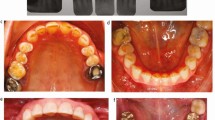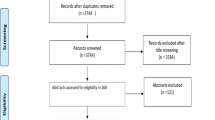Abstract
Data sources
PubMed, the Cochrane Library and the databases of the Centre for Reviews and Dissemination were searched
Study selection
Prospective randomised controlled trials (RCTs), clinical controlled trials (CCTs) and observational studies of Class I and/or Class II resin composite restorations with a sample size of more than 40 individuals or teeth and longer than four years follow-up were considered.
Results
Eight studies involving a total of 910 restorations in 420 patients were included. Seven of the eight studies were completed by the same research group with follow-up times ranging from four to 12 years. There were 80 failures of restorations in total, ranging from two to 17 per study. A majority of the fractures of the restoration or the tooth and endodontic complications occurred during the first three years of follow-up. Caries occurred later, more than 75% after three years in service. The overall incidence rate for all causes of failure was 1.55 lost restorations per 100 restoration years. Survival rate at four years = 0.93 (95% CI; 0.91- 0.95). One study (74 teeth) provided data at 12 years with a survival rate = 0.86 (95% CI; 0.82;0.89). The most common biological reason for failure (a total of 31 restorations) was secondary caries, with or without fracture of the restoration. The overall quality of the evidence was low.
Conclusions
The overall survival proportion of posterior resin composite restorations is high. The major reasons for failure are secondary caries and restoration fracture, which supports the importance of adequate follow-up time as secondary caries often occurred after three years or later.
Similar content being viewed by others
Log in or create a free account to read this content
Gain free access to this article, as well as selected content from this journal and more on nature.com
or
References
United Nations Environment Programme. Minamata convention agreed by nations. UNEP, 2013. Online article available at http://www.unep.org/newscentre/default.aspx?DocumentID=2702&ArticleID=9373 [Accessed November 2015].
Lynch CD, Frazier KB, McConnell RJ, Blum IR, Wilson NH . State-of-the-art techniques in operative dentistry: contemporary teaching of posterior composites in UK and Irish dental schools. Br Dent J 2010; 209: 129–136.
Ferracane JL . Resin composite – state of the art. Dent Mater 2011; 27: 29–38.
Opdam NJ, van de Sande FH, Bronkhorst E, et al. Longevity of posterior composite restorations: a systematic review and meta-analysis. J Dent Res 2014; 93: 943–949.
Demarco FF, Corrêa MB, Cenci MS, Moraes RR, Opdam NJ . Longevity of posterior composite restorations: not only a matter of materials. Dent Mater 2012; 28: 87–101.
Opdam NJ, Bronkhorst EM, Loomans BA, Huysmans MC . 12-year survival of composite vs. amalgam restorations. J Dent Res 2010; 89: 1063–1067.
Rasines Alcaraz MG, Vietz-Keenan A, Sahrmann P, Schmidlin PR, Davis D, Iheozor-Ejiofor Z . Direct composite resin fillings versus amalgam fillings for permanent or adult posterior teeth. Cochrane Database Syst Rev 2014; 3: CD005620.
Author information
Authors and Affiliations
Additional information
Address for correspondence: Á Ástvaldsdóttir, Division of Cariology, Department of Dental Medicine, Karolinska Institutet, Huddinge, Sweden. E-mail: Alfheidur.Astvaldsdottir@ki.se
Ástvaldsdóttir Á, Dagerhamn J, van Dijken JW, Naimi-Akbar A, Sandborgh-Englund G, Tranæus S, Nilsson M. Longevity of posterior resin composite restorations in adults – A systematic review. J Dent 2015; 43: 934–954.
Rights and permissions
About this article
Cite this article
Chauhan, R. Good short-term survival rates for posterior resin composite restorations. Evid Based Dent 16, 114–115 (2015). https://doi.org/10.1038/sj.ebd.6401135
Published:
Issue date:
DOI: https://doi.org/10.1038/sj.ebd.6401135
This article is cited by
-
Biodegradation of Resin-Dentin Bonds: a Clinical Problem?
Current Oral Health Reports (2016)



